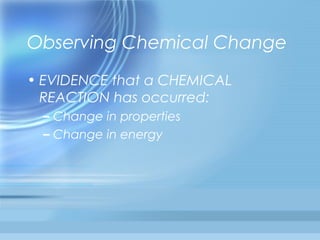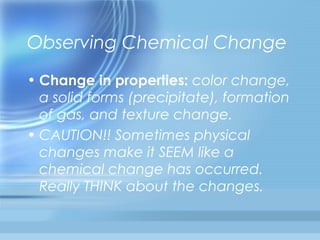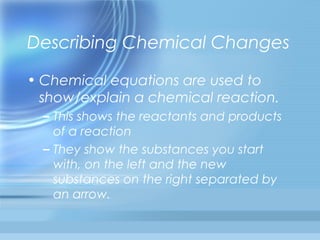This document discusses chemical and physical changes in matter. It defines chemical properties as those that describe a substance's ability to change into a different substance through a chemical reaction. Physical properties can be observed without a chemical change. Chemical changes result in new substances, while physical changes only alter the form or appearance. Evidence of a chemical change includes a change in properties or energy, with energy either absorbed or released. Chemical equations are used to represent chemical reactions and their reactants and products. The mass of reactants and products is conserved in any chemical change.

















